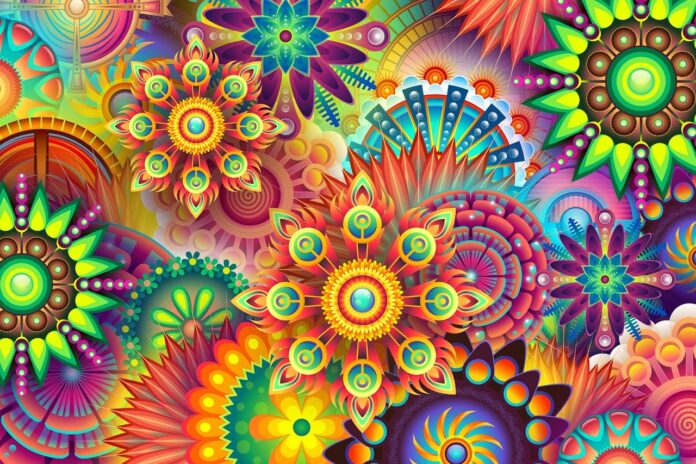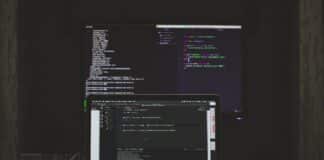Artificial Intelligence (AI) has been revolutionizing various industries, and the world of music and dance videos is no exception. The use of AI in dance and music videos is rapidly transforming how artists create, produce, and experience their content. From generating innovative choreography to enhancing video editing techniques, AI in dance and music videos is pushing the boundaries of creativity and making the process more accessible for creators worldwide. Whether you’re a music fan, a dancer, a videographer, or a content creator, understanding how AI will change dance and music videos is crucial in staying ahead of the curve. In this article, we will explore the ten key things you absolutely need to know about how AI will change dance and music videos, the profound impact it has on the industry, and how it is shaping the future of entertainment.
1. AI Enables Innovative Choreography and Dance Moves
One of the most exciting advancements that AI will change in dance and music videos is choreography. Traditionally, choreographers rely on their creativity, skills, and personal experiences to develop dance moves for music videos. However, with the integration of AI in dance and music videos, artists can now use advanced algorithms and machine learning models to generate unique and innovative dance sequences.
AI-driven software can analyze music tracks and suggest corresponding dance moves, tempos, and rhythms, allowing dancers and choreographers to experiment with new ideas that might not have occurred to them otherwise. By combining AI’s data analysis with human creativity, dancers and choreographers can explore countless combinations of movements that fit the style and mood of the music, creating visually dynamic and captivating performances.
2. AI in Music Video Editing and Post-production
Editing and post-production are key components of creating high-quality music videos. AI in dance and music videos is transforming the way editing is approached, with software now capable of streamlining and enhancing the post-production process. AI can automate tedious tasks such as color correction, background removal, and scene transitions, which would normally take hours of manual work.
Moreover, AI-driven video editing tools can intelligently analyze a music video’s rhythm and pace, syncing the footage with the beat of the music. This allows for smoother transitions, better timing, and a more immersive viewing experience. Whether it’s creating seamless slow-motion effects or speeding up dance sequences to fit the tempo, AI enables editors to create visually stunning videos much faster and with greater precision.
3. Personalized Music Video Content Using AI
One of the most exciting trends in the entertainment industry is the growing demand for personalized content. With AI in dance and music videos, artists and content creators can deliver highly personalized experiences tailored to individual viewers’ preferences. AI can analyze user behavior, such as the types of music videos a viewer watches or their preferred dance styles, and then suggest personalized content based on that data.
For example, if a user frequently watches dance videos in the hip-hop genre, AI algorithms will recommend other hip-hop music videos or even dance tutorials from their favorite artists. This kind of personalization not only enhances the user experience but also helps artists reach a more targeted audience, increasing engagement and boosting viewer retention.
4. AI for Motion Capture and Virtual Dancers
Motion capture technology has been a game-changer in the entertainment industry, especially for dance and music videos. AI in dance and music videos is taking motion capture to the next level by allowing virtual dancers to perform alongside real-life artists. AI-powered motion capture systems can track dancers’ movements in real-time and replicate them on digital avatars or 3D models.
These virtual dancers can perform intricate choreography without the limitations of physical space or even human fatigue. As a result, creators can produce innovative and surreal music videos where virtual dancers perform extraordinary moves that are impossible for humans to execute. This fusion of AI, motion capture, and virtual technology opens the door for entirely new forms of creative expression in the world of dance and music videos.
5. AI-Powered Visual Effects and Augmented Reality
Visual effects (VFX) and augmented reality (AR) have long been staples in creating visually striking music videos. AI in dance and music videos is making these effects even more immersive and dynamic. Through AI, creators can apply real-time adjustments to AR environments, allowing the scene to evolve as the music and dance progress.
For instance, AI can analyze the movements of the dancers and adjust the visual effects accordingly, such as having the background change color or patterns based on the intensity of a particular dance move or beat drop. This level of interactivity creates a more engaging experience for the audience and allows artists to express their creative vision in new and exciting ways.
6. AI as a Creative Collaborator in Music Production
AI doesn’t just enhance the visual side of dance and music videos; it’s also becoming a creative force in the production of the music itself. With AI-driven music production tools, producers and artists can generate melodies, beats, and harmonies that complement the choreography and dance moves in the video.
AI tools like AIVA (Artificial Intelligence Virtual Artist) and OpenAI’s MuseNet use machine learning to compose original music, offering endless possibilities for artists to experiment with different genres and styles. By integrating AI in the music production process, artists can craft compositions that are perfectly aligned with the visual elements of their dance and music videos, resulting in a seamless synergy between music and movement.
7. AI Can Create Interactive Dance and Music Video Experiences
With the rise of interactive entertainment, AI in dance and music videos is enabling the creation of interactive video content where viewers can control aspects of the video in real-time. Imagine a music video where viewers can choose the camera angle, change the dance routine, or even select which dance moves they want to see next.
This kind of interactivity is powered by AI, which analyzes the user’s input and adjusts the video content accordingly. By incorporating AI-driven interactive elements, creators can offer a more personalized and engaging experience, allowing fans to feel more connected to their favorite artists and the music they love.
8. AI as a Tool for Enhancing Dance Training
For aspiring dancers, learning new choreography or perfecting techniques can be challenging. AI in dance and music videos is helping dancers improve their skills through AI-powered training programs and apps. These tools use motion tracking and AI algorithms to analyze a dancer’s movements, providing real-time feedback on posture, timing, and precision.
AI-driven dance training systems can also suggest improvements and generate personalized routines based on the dancer’s strengths and weaknesses. This technology makes it easier for dancers to learn new choreography and refine their skills, ultimately elevating their performance in music videos.
9. AI-Driven Content Discovery and Distribution
Content distribution and discovery have always been vital aspects of a successful music video release. AI in dance and music videos plays a critical role in helping artists get their content in front of the right audience. AI-powered algorithms on platforms like YouTube, TikTok, and Instagram analyze user preferences and viewing history to recommend music videos that match the user’s interests.
This data-driven approach not only helps artists reach more people but also ensures that dance and music videos are shared with a more engaged audience. By leveraging AI, artists can gain valuable insights into their viewers’ behaviors and optimize their content for maximum impact.
10. AI for Video Monetization and Licensing
Finally, AI in dance and music videos is paving the way for new methods of video monetization and licensing. AI algorithms can track how and where a music video is being used across various platforms, helping artists and content creators protect their intellectual property and maximize revenue from video views, collaborations, and licensing agreements.
AI-driven analytics tools can identify potential infringements and alert the content creators, ensuring they are compensated fairly for the use of their work. Additionally, AI can assist in creating new opportunities for monetization, such as recommending licensing deals for use in advertisements, video games, or other media formats.
Conclusion
AI is undeniably transforming the world of dance and music videos, offering new possibilities for creativity, engagement, and personalization. From enhancing choreography to creating interactive experiences, AI in dance and music videos is shaping the future of entertainment in ways that were previously unimaginable. As AI technology continues to evolve, its impact on the music and dance industries will only grow, making it essential for artists, dancers, and content creators to stay informed and embrace these changes. Whether you’re involved in creating music videos or simply an avid fan, understanding how AI will change dance and music videos will provide you with a deeper appreciation of the technological advancements shaping the entertainment landscape.














